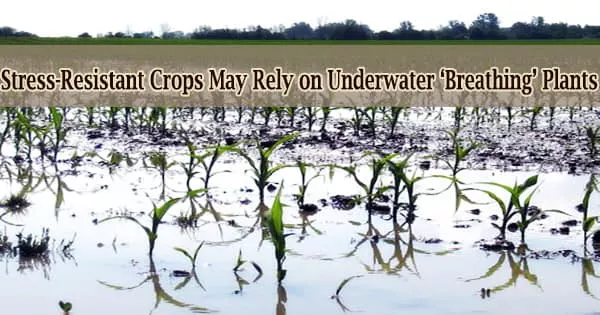Due to the establishment of “lysigenous aerenchyma,” air passageways that help carry gases to the submerged roots, wetland plants have a high tolerance for floods. These channels also aid in the plant’s resistance to drought and nutritional deficiencies.
Scientists from Japan are now looking into the underlying mechanism of aerenchyma formation in order to better understand the phenomena, which could lead to the development of crops that are more resistant to drastic weather changes.
Most crop failures are caused by natural calamities such as floods and droughts. The production of aerenchyma in plants can help them cope with environmental challenges. It is, however, uncommon in non-wetland species such as wheat and maize, which are major food crops in several parts of the world.
Takaki Yamauchi and Mikio Nakazono of Nagoya University in Japan conducted a literature review to gain a better understanding of the numerous elements involved in aerenchyma production.
“If we can genetically control the timing and amount of lysigenous aerenchyma formation in roots of all agronomically important crops, such as maize, wheat, and soybean, the global crop production loss could be dramatically reduced,” says Dr. Nakazono.
If we can genetically control the timing and amount of lysigenous aerenchyma formation in roots of all agronomically important crops, such as maize, wheat, and soybean, the global crop production loss could be dramatically reduced.
Mikio Nakazono
Dr. Yamauchi and Dr. Nakazono compare the lysigenous aerenchyma to a snorkel for breathing underwater. During floods, the roots are cut off from oxygen and other life-sustaining gases.
As a result, the plant develops air routes that connect the submerged parts of the plant to the parts that are above water. These passageways, similar to a snorkel, assist the plant in “breathing” by transferring gases to the submerged roots.
Furthermore, the air passages lower the amount of energy required for breathing, which might help the plant store energy in times of drought or nutrient deficiency. The researchers discovered that a phytohormone called “auxin” is essential for aerenchyma production during normal root growth, as well as two components that contribute to aerenchyma formation in reaction to floods.
When the roots are buried underwater in aerobic conditions, the process begins. When gas exchange is restricted, ethylene accumulates in the roots, encouraging the development of respiratory burst oxidase homolog (RBOH), an enzyme that produces reactive oxygen species (ROS).
As it turns out, the emitted ROS causes tissue cell death, forming cavities through which gases can pass. The presence of calcium (Ca2+) ions transferred from the apoplast can also activate the RBOH (water pathways).
Calcium-dependent protein kinases are found in some plants, and they use Ca2+ to add phosphates to the RBOH, causing it to create ROS. After extended underwater submersion, the plants increasingly experience oxygen-deficient circumstances, resulting in this consequence.
While aerenchyma is most commonly linked with plants that have adapted to high-water-content soils, it can also form in upland plants when they are subjected to drought and nutrient deprivation. Low levels of nitrogen and phosphorus, both critical nutrients for plant growth, were found to increase ethylene sensitivity, promoting aerenchyma production.
Furthermore, ethylene was found to be a common activator of aerenchyma in maize, suggesting a potential strategy to boost the crop’s resistance.
“The increase in ethylene sensitivity could be an effective strategy to stimulate aerenchyma formation in the absence of restricted gas diffusion,” speculates Dr. Yamauchi.
While the process behind aerenchyma development is unknown, the findings of this study offer up the possibility of boosting crop resilience and opening the way for better food security in the face of climate change.
The new paper has been based on the following two papers:
“Fine control of aerenchyma and lateral root development through AUX/IAA- and ARF-dependent auxin signaling.” Proceedings of the National Academy of Sciences of the United States of America, 116, 2019, DOI: 10.1073/pnas.1907181116
“An NADPH oxidase RBOH functions in rice roots during lysigenous aerenchyma formation under oxygen-deficient conditions.” The Plant Cell, 29, 2017, DOI: 10.1105/tpc.16.00976





